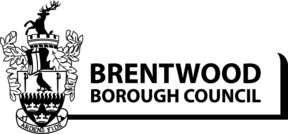Hartswood
Hartswood is a large semi-natural ancient woodland owned and managed by Brentwood Borough Council and written records of the site show it dating back to at least the 7th century when it was owned by Barking Abbey. It forms part of the Thorndon Park Site of Special Scientific Interest complex due to the unique habitats found there and the associated species. The woodland covers 30 hectares and adjoins other sites including Donkey Lane Plantation, Little Warley Common and King George's Playing Fields.
Responsible enjoyment of the site by the public is valued and encouraged as it is ideal for long walks, when linked up to the adjoining sites and further on to Thorndon Country Park, nature watching and short strolls.
The Access Trail - In 1994 an Access Trail was created so that more people could enjoy the woodland. Wide, surfaced paths take you through the woodland and were designed to be accessible for electric scooters, wheelchairs and pushchairs during the summer and dry weather. You can choose from several paths. There are very few slopes along the trails, with the steepest gradient being 1 in 12. Benches are provided along the routes and built into some drenches can be found resting places. For convenience, three colour-coded routes are suggested and waymarked. At a leisurely pace they should take:
- Purple - short route: 3/4km, 20mins
- Green - middle distance: 1 1/2km, 35mins
- Black - longest route: 1 3/4km, 45mins.
If you visit the site you may see some of the following:
- Insects - Wood ants: Look out for the large mound shaped nests made by the wood ants, they can reach several feet wide.
- Birds - Green Woodpecker: There are many green wood peckers at Hartswood as wood ants are one of their favourite foods. Listen for their loud, laughing call.
- Flowers - Bluebells: In May you are likely to come across a mass of bluebells. Lily of the Valley: In June you may find the even rarer woodland flower, Lily of the valley. This plant only grows wild in a few semi-natural ancient woodlands such as Hartswood.
- Trees - Sweet Chestnut: The Romans brought these trees with them for food, so follow in their footsteps and gather the nuts in October.
Hutton Country Park
Hutton Country Park has been owned by Brentwood Borough Council since 1997. It is a Local Nature Reserve, supporting a vast array of native flora and fauna and is thus managed as an area of conservation value in what is otherwise an area of vast intensive arable land and urban expansion. The park covers 36 hectares, containing a large area of natural grassland, an area of ancient woodland, ponds, wetland and the River Wid, which forms the northerly border. The railway line dissects the park forming separate north and south sectors, of which the northern section is grazed by cattle between April and October.
Responsible enjoyment of the site by the public is valued and encouraged as it is ideal for pleasant strolls, nature watching and dog walking. For anyone wishing to visit the site, pedestrian access to the park may be gained from Sunray Avenue and Goodwood Avenue. Access can also be gained from Wash Road where there is a small car park.
History - In the 1970's the land belonged to part of a farm, when the fields were used for grazing for sheep and bullocks. The layout of the fields still remains predominantly the same as it was during this time. However the site has been put under threat of development several times. During the 1970's and 1980's there were plans to develop the site for housing and commercial units and to create a link road across the fields. Following this, the development company Tarmac purchased the site, with the view for possible development, however the site remain unchanged.
The site as it is now - Brentwood Borough Council have improved many aspects of the park including planting hedgerows, re-introducing cattle grazing, providing better access and maintaining the ditch systems.
Grassland - The majority of the park is covered in semi-natural species rich grassland on neutral soil. It was created through human activity and is maintained by cutting or grazing in order to sustain the diversity of plants, animals and insects.
Woodland - The area of woodland is situated to the east of the park. It comprises of ancient semi-natural woodland, containing mainly oak and hornbeam through which a single path runs. The woodland is split into two sectors; a council-owned sector, known as Collins Shaw and a privately-owned sector. Visitors are invited to walk through the privately-owned area however it should be noted that the route may be closed by the landowner is wished. If you visit the woodland between April and May you will be treated to a stunning display of bluebells covering the woodland floor.
Ponds and wetlands - There are four ponds in the park; three in the grassland fields and one in the woodland. The main pond is near the Wash Road entrance and is found by following the right hand fork of the path at the main entrance. The ponds are extremely valuable for conservation reasons and often support rare species, especially the wetland pond, which has developed a specialist ecosystem. The boardwalk to the east of the pond allows easy access over the wetland, which is important for birds and insects. Kingfishers are regularly seen on the banks of the River Wid.
Merrymeade Country Park
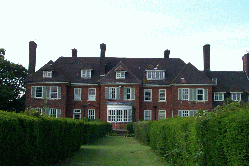 Merrymeade Country Park is managed by Brentwood Borough Council. The site is split into a number of fields, two of these being owned by Essex County Council and leased to Brentwood Borough Council and the other being owned by Brentwood Borough Council. The site is an oasis for wildlife close to the town centre and it is therefore managed primarily for nature conservation. This 34 hectare site consists of four grassland fields, scrub, a small area of woodland and wetland habitats including a pond and stream.
Merrymeade Country Park is managed by Brentwood Borough Council. The site is split into a number of fields, two of these being owned by Essex County Council and leased to Brentwood Borough Council and the other being owned by Brentwood Borough Council. The site is an oasis for wildlife close to the town centre and it is therefore managed primarily for nature conservation. This 34 hectare site consists of four grassland fields, scrub, a small area of woodland and wetland habitats including a pond and stream.
Responsible enjoyment of the site is valued and encouraged as it is ideal for pleasant strolls, nature watching and dog walking. For anyone wishing to visit the site pedestrian access can be gained via a public footpath off Sawyers Hall Lane, next to St Thomas of Canterbury C of E Primary School, from another public footpath off Hall Lane and also from Merrymeades Chase. Please note that there is no site car park or toilet facilities.
History - The fields at Merrymeade Country Park were recorded as pasture in 1837, although they may have been in that use for centuries before this time. In the early 20th century what is now the park may have formed part of the estate of the Horne Paine family who owned Merrymeade House which was built in 1912. The Anglia Polytechnic University was built in the 1960s and they later took over the house, gardens and other buildings.
The site as it is now - Brentwood Borough Council have improved many aspects of the park, including pond maintenance, bramble clearance and providing better access.
Grassland - Merrymeade Country Park is made up of predominately unimproved grassland. It is cut twice a year on a conservation basis with the aim being to improve the diversity of grasses and flowers found at this site.
Ponds and streams - There are a number of ponds in the middle of the site close to the public footpath. These ponds are of great importance as they are home to a population of great crested newts. The ponds are also home to a wide range of insect life including several species of damselflies and dragonflies. There is also a stream that flows through the centre of the park.
Hedgerows and scrub - There are several hedgerows that border the park and form the boundaries between fields. These fields boundaries have not changed since 1837. Large oak trees dominate the hedges, with occasional hornbeam, fields maple and hawthorn. In the field closest to Merrymeade House there are small thickets of scrub. These provide an ideal habitat for birds and small mammals.
Paths and access - There are a number of paths at this site, one of which is a public footpath running from Sawyers Hall Lane to Hall Lane. The section of the footpath which runs through the site is surfaced and is suitable for walkers, pushchairs and wheelchairs. The other paths which cross the grassland fields are flat and generally hard subject to weather conditions. There is a stretch of boardwalk in place crossing an area of the site that can become very boggy in winter. There are no stiles on site however there are a number of squeezes which have in put in place to restrict motorcycles from accessing the site.
- Grasses - Heath Bedstraw, Creeping Soft-grass, Red Fescue.
- Flowers - Lady's Smock, Pignut, Devil's-bit Scabious.
- Butterflies - Essex Skipper, Meadow Brown.
- Insects - Roesel's Bush Cricket.
- Amphibians - Great Crested Newts.
St. Faith's Country Park
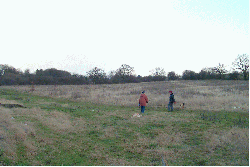 St Faith's has been managed by Brentwood Borough Council since 1999. Before this, it formed part of the grounds of St Faith's Hospital. The site is managed to benefit wildlife and biodiversity whilst still allowing informal public access. The park covers 16 hectares of attractive open grassland fields bounded by mature hedgerows. There is also small areas of scrub and wet woodland, watercourses and ponds. The undulating land form serves to hide the proximity of the A12 and urban area and gives views towards South Weald and the surrounding countryside.
St Faith's has been managed by Brentwood Borough Council since 1999. Before this, it formed part of the grounds of St Faith's Hospital. The site is managed to benefit wildlife and biodiversity whilst still allowing informal public access. The park covers 16 hectares of attractive open grassland fields bounded by mature hedgerows. There is also small areas of scrub and wet woodland, watercourses and ponds. The undulating land form serves to hide the proximity of the A12 and urban area and gives views towards South Weald and the surrounding countryside.
Responsible enjoyment of this park by the public is valued and encouraged. The site is in close proximity to a large urban population and makes it ideal for pleasant strolls, nature watching and dog walking. For anyone wishing to gain access to the site there are entrances at Weald Road, London Road, Honeypot Lane and Sir Francis Way. Please note that there are no car parking and toilet facilities at this site.
The site as it is now - Brentwood Borough Council have improved many aspects of the park including grass cutting on a conservation basis, providing better access and maintaining ditch systems.
Grassland - Grassland forms the largest single habitat at St Faith's. The field patterns have remain largely unchanged for at least 150 years. Although it is not known whether the land was used as pasture or arable land in the past, there is no evidence of recent intensive farming. The grassland areas are cut twice a year on a conservation basis to sustain the diversity of plants, animals and insects.
Hedgerows - The ancient species rich hedgerows are important for their wildlife interest. There are many mature hedgerow trees and areas of scrub, both of which create high wildlife value for birds and mammals. St Faith's has avoided many of the threats to hedgerows such as removal, over management and loss of standard trees.
Watercourses - There are both flowing and standing water habitats on the site connected in a network across the site.
Woodland - There is a small area of woodland to the north of the site adjacent to Weald Road.
Paths and access - A surfaced joint pedestrian and cycleway is provided across the site from Weald Road to London Road and provides links to Green Lane which in turn links Weald Road to Costead Manor Road. This is suitable for walkers and cyclists of all abilities and also pushchair and wheelchair users. The other path which cross the fields are unsurfaced, undulating and hard subject to weather conditions. These are not suitable for wheelchairs. Benches are in place at regular intervals.
If you visit the park you may see some of the following:
- Animals - Kestrels, Weasels.
- Insects - Seven-spot Ladybird.
- Trees - Oak, Willow.
- Flowers - Lady's Smock, Musk Mallow, Burnet Saxifrage.
- Grasses - Tufted Hair-grass, Meadow Foxtail, Sweet Vernal-grass.
Thorndon Country Park
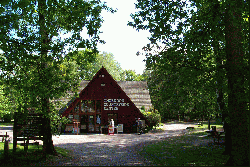 Thorndon Country Park is divided into Thorndon Park North, with the Countryside Centre, and Thorndon Park South. These areas are linked by the 'Old Park', which is owned by the Woodland Trust, and 'Old Thorndon Pasture', which is owned by Essex County Council.
Thorndon Country Park is divided into Thorndon Park North, with the Countryside Centre, and Thorndon Park South. These areas are linked by the 'Old Park', which is owned by the Woodland Trust, and 'Old Thorndon Pasture', which is owned by Essex County Council.
The most important habitat in Thorndon Country Park is the ancient deer park area dating back to the 15th century which has been designated a Site of Special Scientific Interest. The design of the parkland was reorganised in the late 18th century by 'Capability' Brown, obscuring effects of the French landscape designer, Bourginion. Other parts of the park include ancient woodland, plantations of both broad leaved and coniferous species, some grassland and three small lakes.
The Countryside Centre in Thorndon Park North, built from timber blown over in the 1987 storms in the two parks, has a permanent exhibition, a shop selling gifts and refreshments, and a schools' room. Both the exhibition and schools' room are available to hire.
Fishing is available if a day ticket is purchased.
Horse riding is allowed, but you must keep to the areas marked with a blue arrow.
Car parks can be found on Brentwood Road (A128) and The Avenue. Tel 01277 211250.
See the Explore Essex - Thorndon Country Park website for information on the facilities, activities, events, maps and parking charges.
Warley Country Park
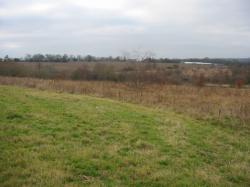 Warley Country Park covers 21 hectares of open space for quiet informal recreation. The open space, which has been developed on former farmland, includes sizeable areas of naturally colonising secondary woodland, hedgerows, a stream and a pond.
Warley Country Park covers 21 hectares of open space for quiet informal recreation. The open space, which has been developed on former farmland, includes sizeable areas of naturally colonising secondary woodland, hedgerows, a stream and a pond.
The rough grassland is scattered with young tree saplings where you may see the following species of flower: Red Clover, Rosebay Willowherb, Bristly Ox-tongue and Scarlet Pimpernel. A variety of bumblebees and butterflies can be seen on the grassland and also Roesel's Bushcricket which is a nationally scarce species. The pond contains Common Reed and Reedmace where Moorhen hide. Birds and invertebrates benefit from having wood, scrub and long grass present in this complex mosaic of habitats.
The Park offers views over Weald and to St. Peter's Church to the north west of the site. Pedestrian access can be gained from Vaughan Williams Way and Crescent Road.
Weald Country Park
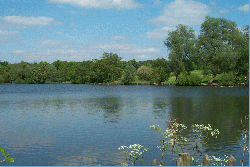 Weald Country Park is located to the west of Brentwood. At nearly 500 acres it is the largest of the Essex County Council Country Parks. Parkland has been established here for more than 700 years; the lakes, the tree-lined avenues, and large parkland trees are the result of the landscaping carried out in the 18th century.
Weald Country Park is located to the west of Brentwood. At nearly 500 acres it is the largest of the Essex County Council Country Parks. Parkland has been established here for more than 700 years; the lakes, the tree-lined avenues, and large parkland trees are the result of the landscaping carried out in the 18th century.
The Ranger service at Weald Park and Thorndon Park offers many special activities throughout the year. Activities for children vary from investigating flowers and insects to kite making and Halloween walks. In addition there are many educational walks and tours for family and adults on topics such as natural history, fungi and country park management.
Car parks can be found on Weald Road and Lincolns Lane, CM14 5QS
Tel 01277 261343.
See the Explore Essex - Weald Country Park website for information on the facilities, activities, events, maps and parking charges.
